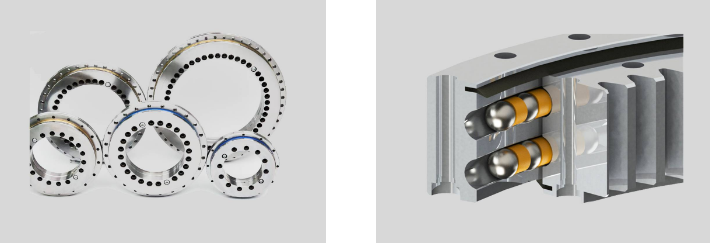When selecting a slew drive, several factors must be considered to ensure that the component will meet the operational requirements of the application. A slew drive is a ready-to-install unit consisting of a ball or roller slewing ring, worm shaft, and often a completely enclosed housing. It's designed to handle axial, radial, and moment loads, providing rotational motion with controlled speeds and torque. One common application of slew drives is in solar tracking systems, where they enable the panels to follow the sun's trajectory, maximizing efficiency.
The selection of a solar slew drive, in particular, demands careful consideration due to the specific challenges posed by the application. Solar tracking systems require drives that can perform with precision, reliability, and durability under varying environmental conditions.
Here are several criteria to guide the selection process:
- Load Capacity: The slew drive must be capable of supporting the loads applied to it, including axial, radial, and moment loads. The sizing should account for maximum expected loads to ensure reliability.
- Gear Ratio: The gear ratio of the slew drive determines the relationship between the input speed (typically from a motor) and the output speed (rotation of the slewing ring). A higher gear ratio means higher torque but lower speed, which is often required for the precise positioning of solar panels.
- Efficiency: Solar slew drives should be efficient to maximize the energy produced by the solar panels. Efficiency in a slew drive is affected by the gear design, lubrication, and sealing. High-efficiency drives will require less power to operate, which is vital in solar applications where power conservation is crucial.

- Durability and Service Life: Considering the environmental exposure of solar tracking systems, the slew drive must be designed for durability. This includes the ability to withstand temperature extremes, dust, water, and any other environmental factors it may encounter.
- Precision and Backlash: The drive should offer the precision required for solar tracking. Backlash, or play between the teeth of the gears, can affect precision. A drive with minimal or no backlash is preferable for applications requiring high accuracy.
- Sealing and Corrosion Resistance: Proper sealing is necessary to prevent contaminants such as dust and water from entering the drive, potentially causing wear and failure. Corrosion resistance is also essential to ensure longevity, especially in harsh weather conditions.
- Maintenance: Maintenance requirements can impact the long-term operating costs of the solar slew drive. Drives that are sealed and lubricated for life can reduce maintenance needs and increase reliability.
- Safety and Certification: It's essential to choose a slew drive that meets industry standards and certifications, ensuring that it's safe for use in solar applications.
When considering a solar slew drive, it's also crucial to work with reputable manufacturers that can provide detailed specifications and support. They should be able to offer custom solutions if standard models do not meet the specific requirements of your application.
The provider should also offer comprehensive documentation and after-sales support to assist with any questions or issues that may arise during the lifespan of the product.
Moreover, consider the compatibility of the slew drive with other components of the solar tracking system, such as motors and control systems. Ensuring compatibility from the outset can save time and resources during installation and operation.
In summary, the choice of a solar slew drive is a complex decision that should be based on a thorough understanding of the application's requirements. Factors such as load capacity, gear ratio, efficiency, durability, precision, sealing, maintenance, and safety certifications must all be evaluated. By carefully selecting a solar slew drive that meets these criteria, you can ensure that your solar tracking system operates effectively, safely, and reliably for many years.
